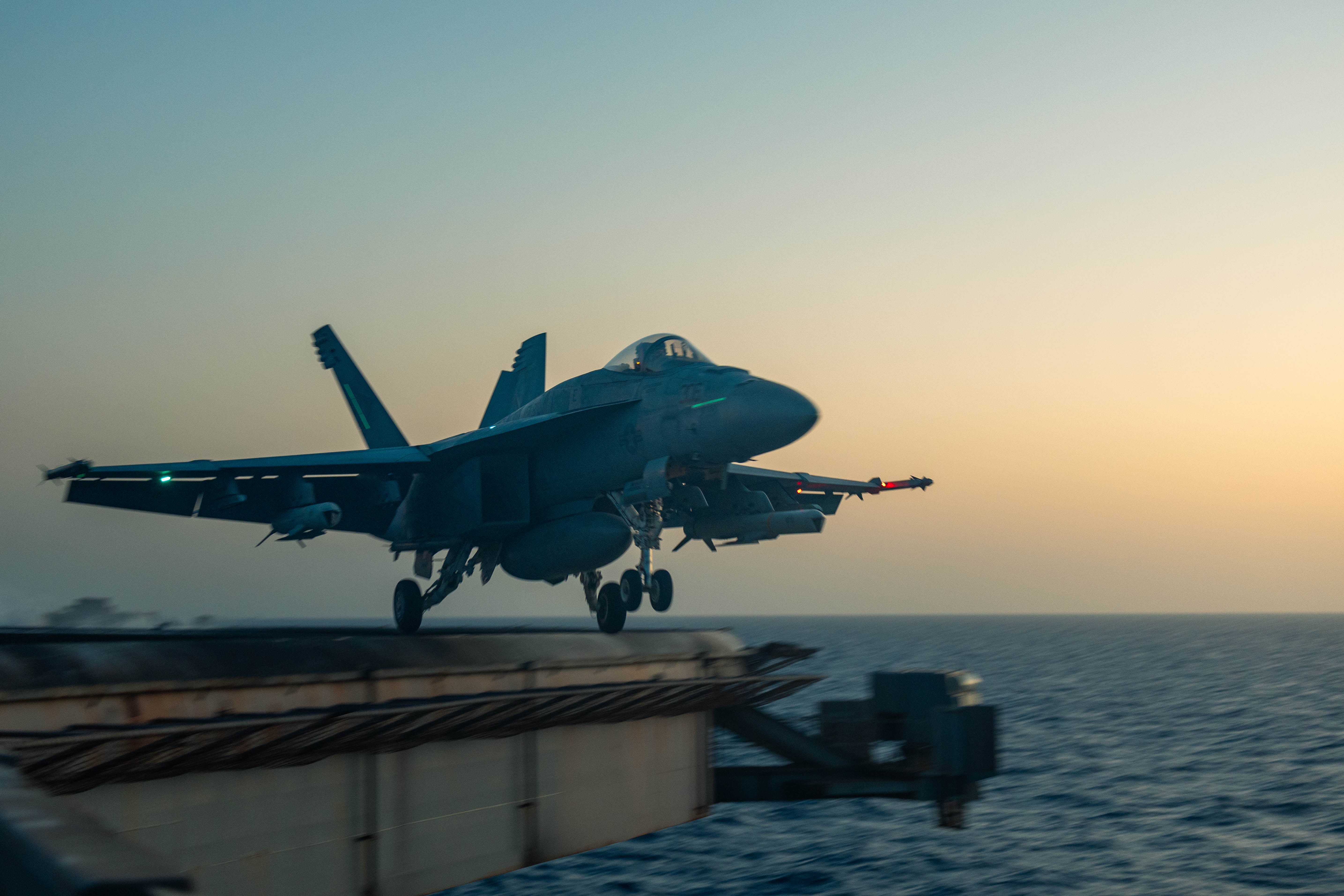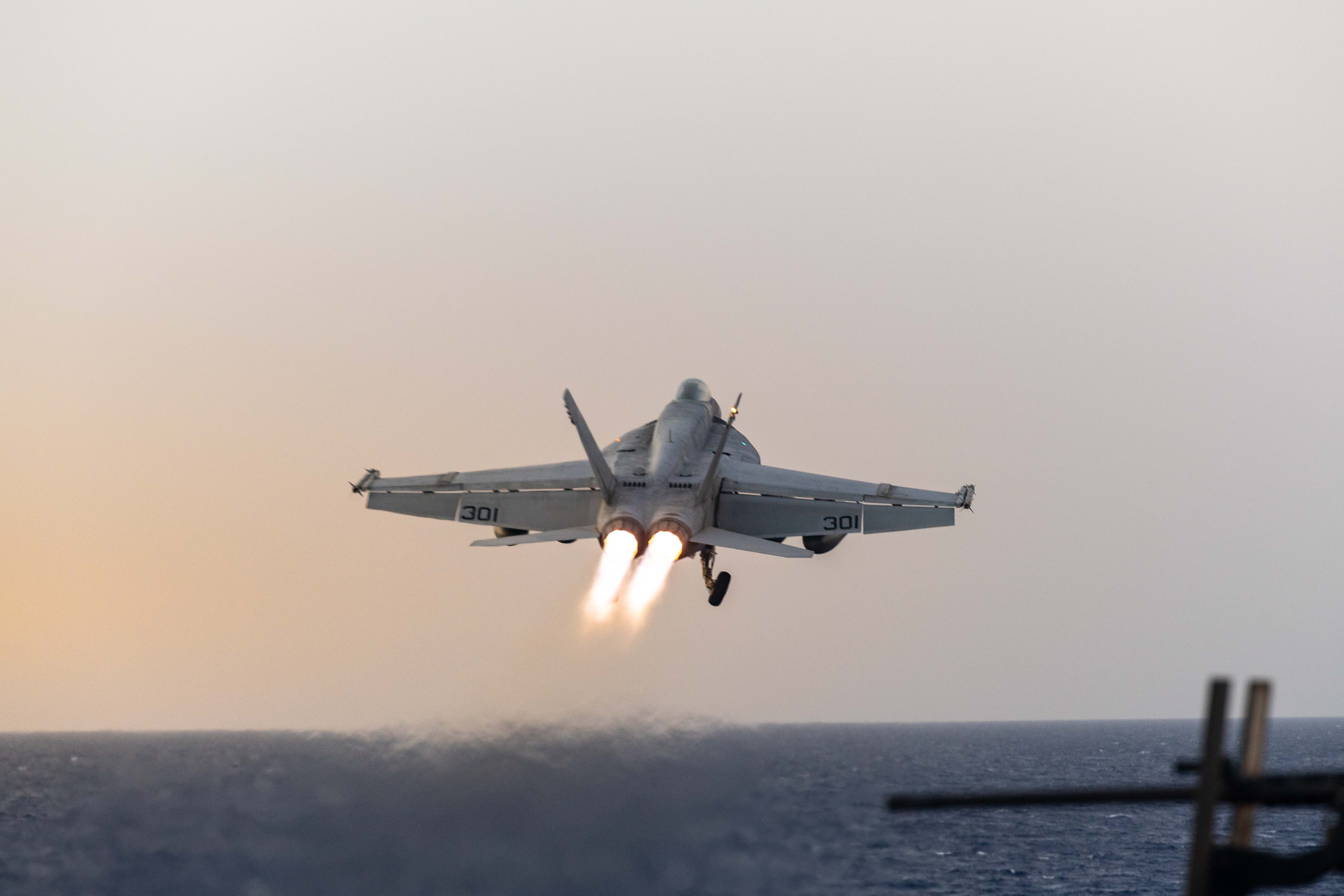
US Navy photo
It’s been a rough few months for the USS Harry S. Truman, which has suffered a string of serious and expensive mishaps since the aircraft carrier sailed into the Middle East at the end of last year.
The Nimitz-class aircraft carrier has lost three F/A-18 Super Hornet fighter jets in the Red Sea — the most recent incident occurred on Tuesday — and collided with a commercial vessel, an incident that cost its skipper his job.
While it’s unclear how much damage the Truman sustained from the collision, F/A-18s are estimated to cost roughly $60 million apiece, meaning the carrier has racked up at least $180 million in lost planes and damage.
It adds to the mounting costs the US military has borne from the Trump administration’s seven-week air war against the Yemen-based Houthi militants attacking commercial ships in the Red Sea.
Arrestment failure
On Tuesday, an F/A-18F Super Hornet was landing on the Truman’s flight deck when the arresting cable failed, sending the aircraft over the edge and into the water. Both aviators safely ejected and were rescued by an MH-60S Seahawk helicopter.
“The aviators were evaluated by medical personnel and assessed to have minor injuries,” a defense official told Business Insider. “No flight deck personnel were injured.”

Photo by Gerard Bottino/SOPA Images/LightRocket via Getty Images
It’s unclear exactly what went wrong during the landing. US carriers have catapults to launch aircraft and arresting gear to recover them. The wire cables are tensioned across the flight deck to catch an aircraft’s tailhook and rapidly decelerate it, a process repeated dozens of times daily during flight operations. Physical damage to a cable or a failure of the hydro-pneumatic systems that absorb the force of the landing aircraft.
Towing incident
On April 28, an F/A-18E was actively under tow in Truman’s hangar bay, an area under the flight deck where aircraft are maintained, when the move crew “lost control” of the fighter, the Navy said. At the time of the incident, the jet was likely on one of Truman’s four elevators, which move aircraft between the hangar bay and the flight deck.
The jet and the tow tractor fell overboard. A defense official later told BI that a sailor jumped from the cockpit of the F/A-18 right before it fell into the Red Sea, and was lightly hurt as a result of the incident.
The Navy said at the time that the Truman carrier strike group and its air wing “remain fully mission capable.”
At least four fighter squadrons are deployed on the Truman, with likely 10 or more fighters per squadron.
Collision
On February 12, the Truman collided with a commercial vessel in the Mediterranean Sea near Egypt’s Port Said, at the mouth of the Suez Canal.
The aircraft carrier suffered some damage, including to the exterior wall of two storage rooms and a maintenance space. There was also damage external to the ship, including a line handling space, the fantail, and the platform above one of the storage spaces. Truman sailed to a US naval base in Greece for repairs.

US Navy photo
Capt. Dave Snowden, Truman’s commanding officer at the time, said the ship was “fully mission capable” and even continued to conduct flight operations after the crash. He was later fired and replaced by Capt. Christopher Hill, who previously captained the USS Dwight D. Eisenhower, the first aircraft carrier to take on the Iran-backed Houthi group in Yemen that’s been attacking shipping lanes.
Friendly fire
On December 22, the guided-missile cruiser USS Gettysburg, part of Truman’s strike group, shot down an F/A-18 Super Hornet over the Red Sea in what the US military said was “an apparent case of friendly fire.”
The fighter jet had launched from the Truman. Both aviators ejected safely.
That incident occurred just a few days after the Truman and its strike group entered the Middle East region. It became the Navy’s fourth aircraft carrier to join the fight against the Houthis.
After weeks of calm, the US military began a new bombing campaign against the Houthis on March 15. The Truman participated in these intensive combat operations for over seven weeks until Tuesday, when President Donald Trump said American forces would stop.
The post A US aircraft carrier fighting in the Red Sea has cost the Navy at least $180 million in lost planes and damage appeared first on Business Insider.




